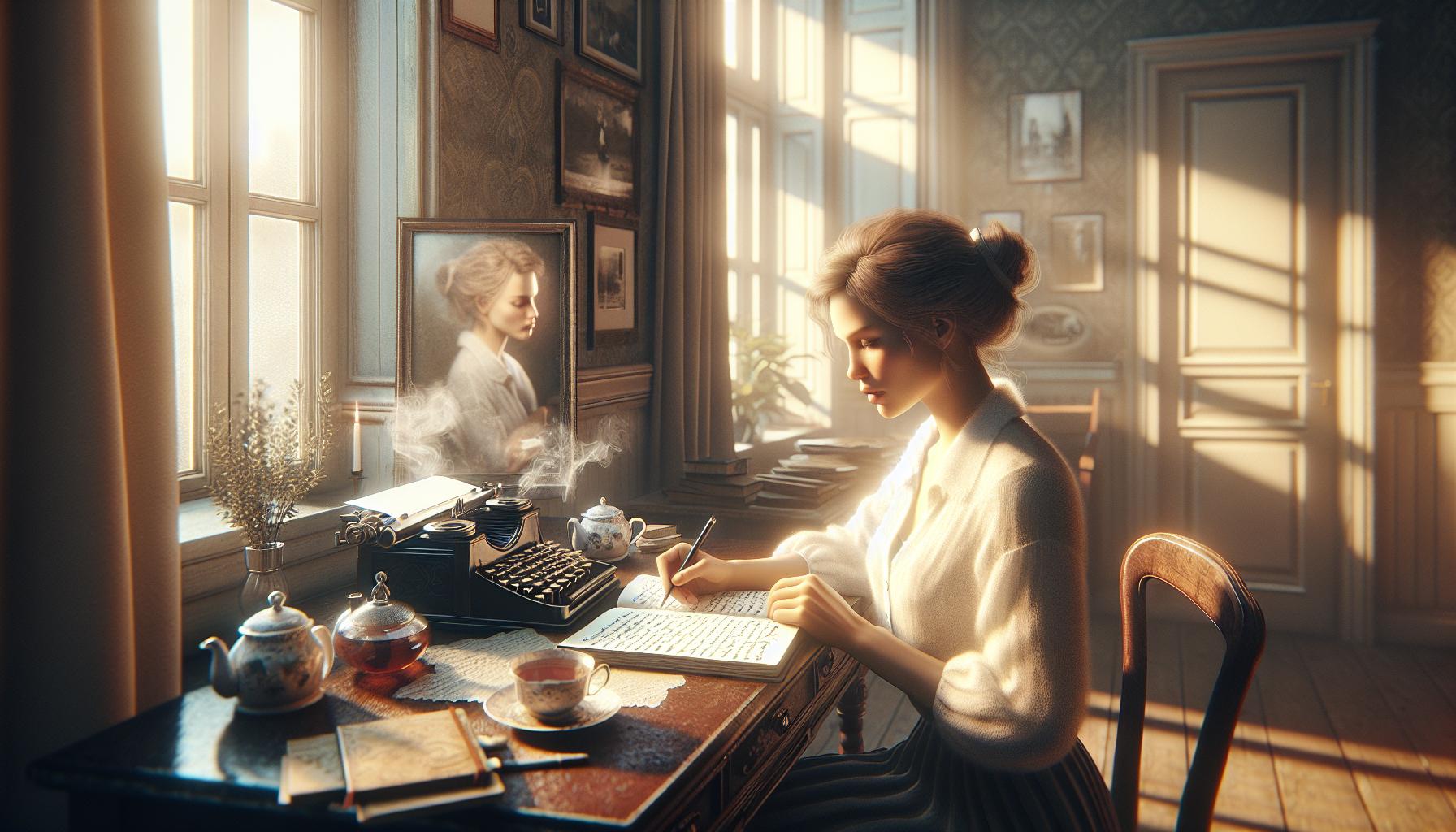Nonfiction writing brings truth to life in ways that captivate, educate and inspire readers worldwide. From memoirs that bare the soul to investigative journalism that uncovers hidden truths these real-world narratives shape our understanding of the world around us.
Whether you’re an aspiring writer looking to break into nonfiction or a curious reader exploring different genres there’s a vast landscape of nonfiction writing to discover. From personal essays that make readers laugh out loud to academic papers that challenge the mind nonfiction encompasses an incredible range of storytelling styles and formats. Today’s most compelling nonfiction works blend factual accuracy with creative storytelling techniques to keep readers hooked from start to finish.
What Is Nonfiction Writing
Nonfiction writing presents factual stories, events, information based on real-world experiences, research, or historical records. It encompasses all written content that explores true stories, ideas, or topics with verifiable facts.
Key Elements of Nonfiction
- Factual Accuracy: Sources include documented evidence, primary research materials or personal experiences.
- Research-Based Content: Information draws from interviews, data analysis or field observations.
- Clear Structure: Content follows logical organization with defined sections or chapters.
- Subject Matter Expertise: Writing demonstrates deep knowledge in specific topics or fields.
- Purpose-Driven: Text aims to inform, educate, persuade or document events.
- Objective Perspective: Content maintains unbiased presentation of facts with minimal personal interpretation.
- Journalism: News articles, feature stories or investigative reports covering current events
- Academic Writing: Research papers, textbooks or scholarly articles presenting educational content
- Biography: Life stories of historical figures or contemporary personalities
- Memoir: Personal narratives focused on specific life experiences or periods
- Self-Help: Practical guides offering solutions to personal or professional challenges
- Travel Writing: Detailed accounts of destinations, cultures or journey experiences
- Technical Writing: Manuals, documentation or professional guides explaining processes
- Essays: Analytical pieces exploring specific topics through research or personal insight
Personal Essays and Memoirs

Personal essays and memoirs transform individual experiences into relatable narratives that connect with readers through authenticity and emotional depth. These intimate forms of nonfiction writing capture life’s significant moments while offering universal insights.
Crafting Personal Narratives
Personal narratives combine self-reflection with compelling storytelling techniques to engage readers. Strong personal essays incorporate specific sensory details, dialogue, scene-setting elements and a clear thematic focus. Writers establish their unique voice through careful word choice, rhythm patterns and consistent perspective. Effective personal narratives maintain emotional honesty while selecting relevant details that serve the story’s purpose. Common approaches include chronological storytelling, thematic organization or braided narratives that weave multiple threads together.
Notable Memoir Examples
Frank McCourt’s “Angela’s Ashes” depicts his impoverished Irish childhood through vivid sensory details and distinctive voice. Joan Didion’s “The Year of Magical Thinking” explores grief through precise observations and emotional clarity. Maya Angelou’s “I Know Why the Caged Bird Sings” presents her early life experiences with poetic language and cultural insight. Mary Karr’s “The Liars’ Club” demonstrates masterful scene reconstruction and dialogue. These memoirs exemplify how skilled writers transform personal histories into compelling literature through careful craft choices, authentic voice and universal themes that resonate with readers.
Journalistic Writing
Journalistic writing transforms current events into compelling narratives while adhering to strict factual accuracy standards. This form of nonfiction writing prioritizes objectivity clear presentation of information.
Feature Articles
Feature articles explore in-depth stories about people places trends through detailed research interviews. Publications like The New Yorker The Atlantic showcase long-form features that combine narrative techniques with factual reporting. Notable examples include Gay Talese’s “Frank Sinatra Has a Cold” Susan Orlean’s “The American Male at Age Ten.” These pieces incorporate:
- Scene-by-scene construction with vivid descriptions
- Extended character profiles backed by thorough research
- Contextual analysis of broader social implications
- Expert insights quotes from multiple sources
- Narrative hooks that capture reader interest
- Document trails revealing evidence patterns
- Multiple source verification for fact accuracy
- Data analysis presenting complex information
- Timeline construction of events sequences
- Protection of confidential sources
- Follow-up reporting tracking developments
| Element | Purpose | Example |
|---|---|---|
| Source Attribution | Credibility | “According to official records…” |
| Data Visualization | Clarity | Graphs charts timelines |
| Document Citations | Verification | Court records testimonies |
Academic and Professional Writing
Academic and professional writing demonstrates expertise through methodical research presentation technical precision. These forms of nonfiction prioritize clarity accuracy over stylistic elements.
Research Papers
Research papers present original findings through systematic investigation analysis. The structure includes an abstract introduction methodology results discussion sections. Authors integrate supporting evidence from peer-reviewed sources using formal citation styles like APA MLA Chicago. Effective research papers analyze data through statistical methods visual representations such as graphs charts tables. Notable examples include publications in NatureScience which feature groundbreaking discoveries in fields ranging from medicine to physics.
| Research Paper Components | Purpose |
|---|---|
| Abstract | Summarizes key findings in 150-300 words |
| Literature Review | Examines 25-50 relevant studies |
| Methodology | Details exact procedures equipment |
| Results | Presents data with 3-5 visual elements |
Technical Documents
Technical documents translate complex information into accessible instructions specifications. User manuals software documentation standard operating procedures incorporate step-by-step guides diagrams flowcharts. Writers organize content using hierarchical headings numbered lists bullet points tables. Companies like Microsoft Apple produce comprehensive documentation featuring product specifications troubleshooting guides API references.
| Document Type | Key Features |
|---|---|
| User Manuals | Sequential instructions visual aids |
| API Docs | Code samples endpoint references |
| SOPs | Process maps decision trees |
| Specs | Technical parameters measurements |
Creative Nonfiction Forms
Creative nonfiction blends factual accuracy with literary techniques to create compelling narratives. These forms employ storytelling elements while maintaining truthful accounts of real events people experiences.
Literary Journalism
Literary journalism combines traditional reporting with narrative storytelling techniques to create immersive nonfiction. Writers like Tom Wolfe pioneered this form through works such as “The Electric Kool-Aid Acid Test” which uses scene-by-scene construction detailed dialogue character development. Gay Talese’s “Frank Sinatra Has a Cold” demonstrates the power of observational detail research to craft engaging profiles without direct interviews. The New Yorker publishes notable examples including John McPhee’s geological narratives Katherine Boo’s social commentary pieces. These works incorporate:
- Extensive research through interviews documents field observations
- Vivid scene descriptions that place readers in specific moments
- Multiple perspectives to create depth complexity
- Thematic exploration of broader social issues
- Narrative arcs that maintain tension suspense
- Primary source materials including personal correspondence official records
- Contextual analysis of historical events cultural influences
- Multiple viewpoint perspectives from contemporaries associates
- Chronological narrative structures with thematic threads
- Balanced portrayals examining achievements controversies
Conclusion
Nonfiction writing remains a vital medium for sharing knowledge understanding the world and connecting with others through authentic stories. From deeply personal memoirs to rigorously researched academic papers each form serves a unique purpose in educating and engaging readers.
The diverse examples across journalism technical writing and creative nonfiction demonstrate how writers can effectively combine factual accuracy with compelling storytelling techniques. These forms continue to evolve adapting to modern readers’ needs while maintaining their commitment to truth and authenticity.
Whether documenting historical events sharing personal experiences or explaining complex concepts nonfiction writing plays an essential role in shaping our understanding of reality and connecting us through shared human experiences.
